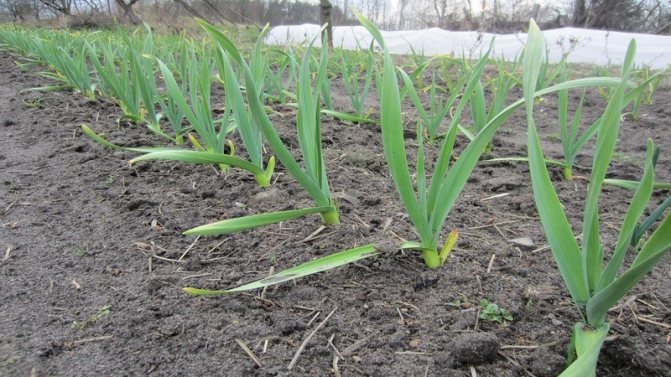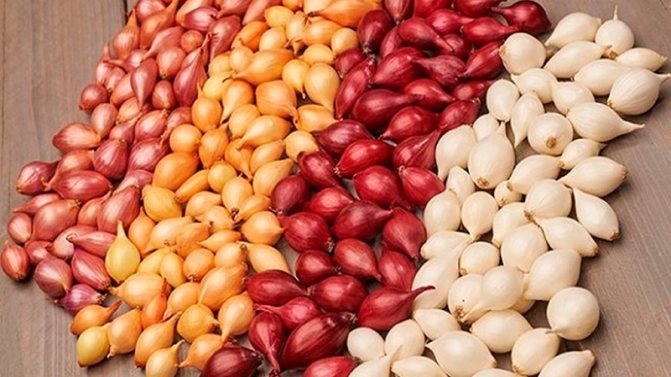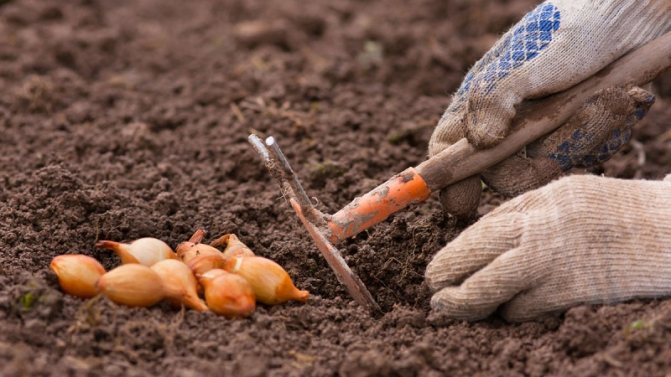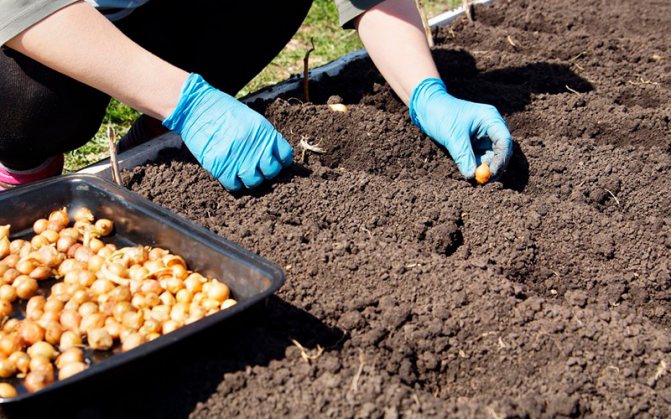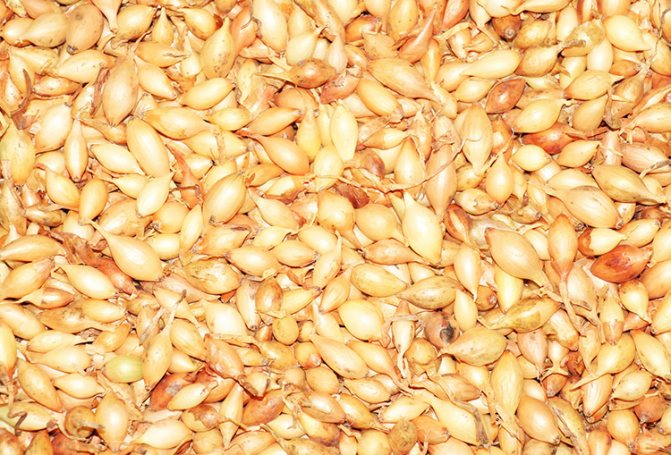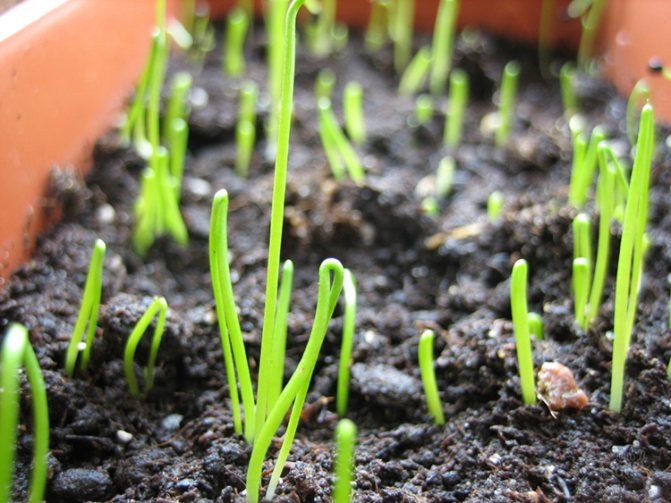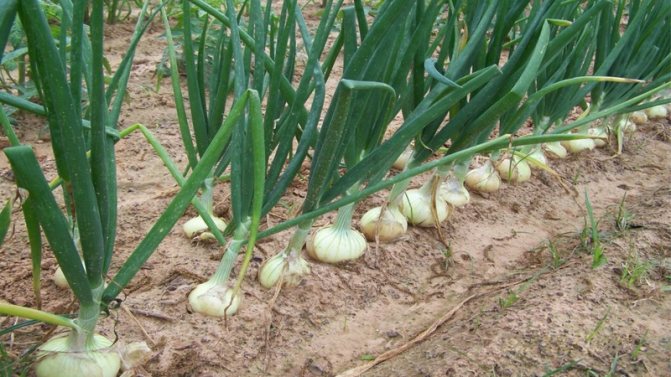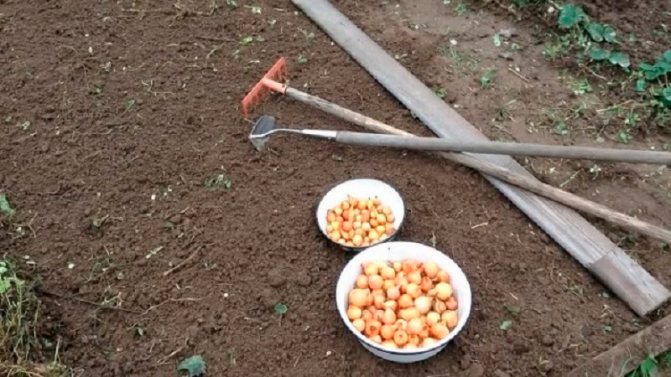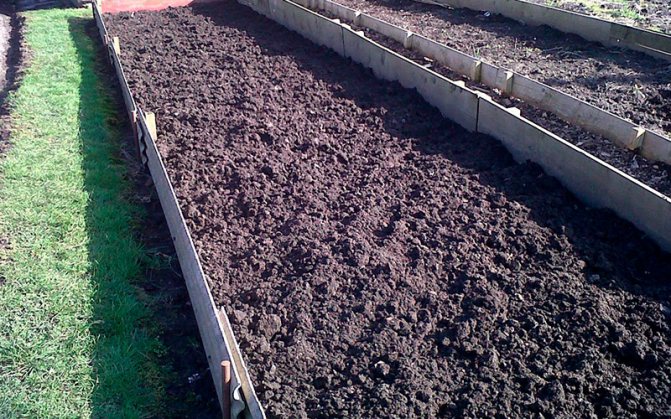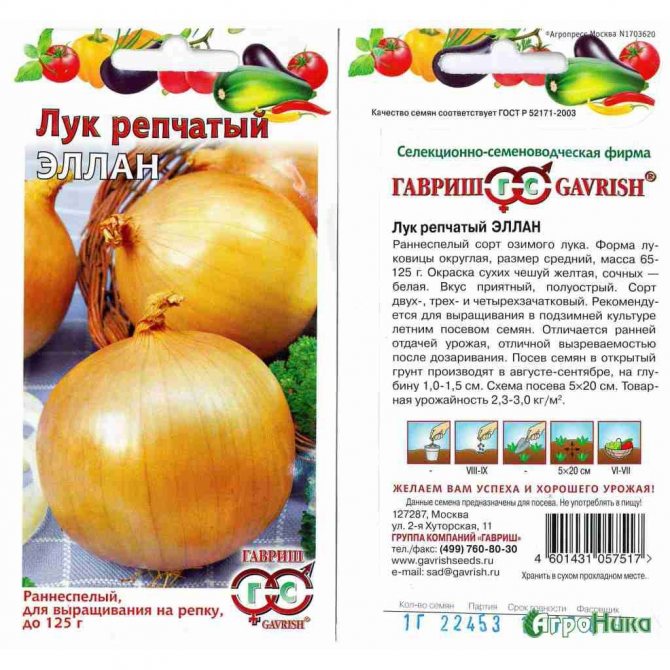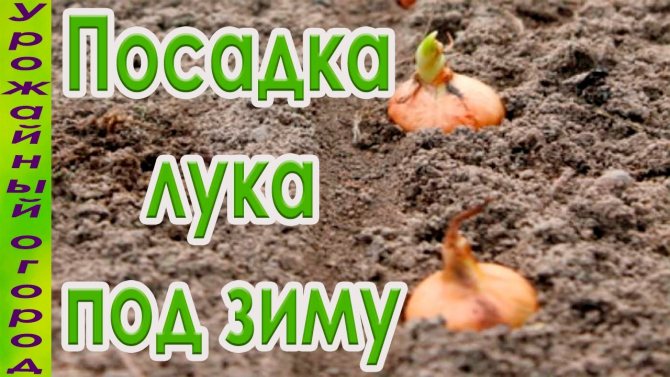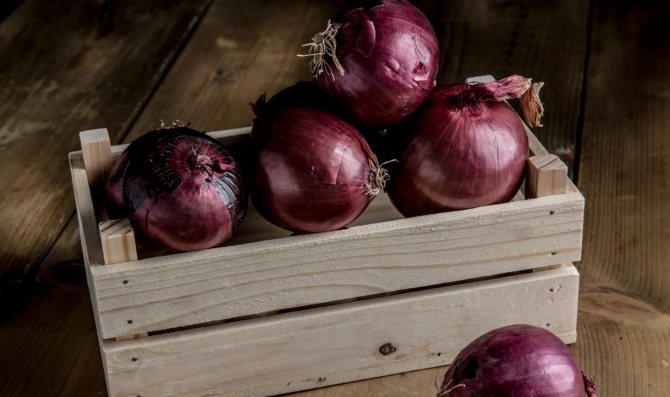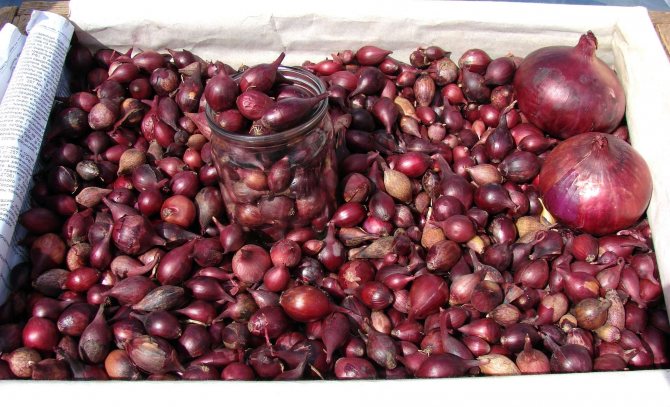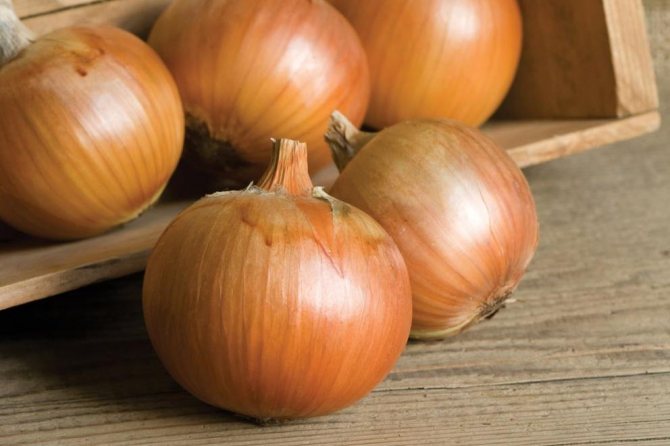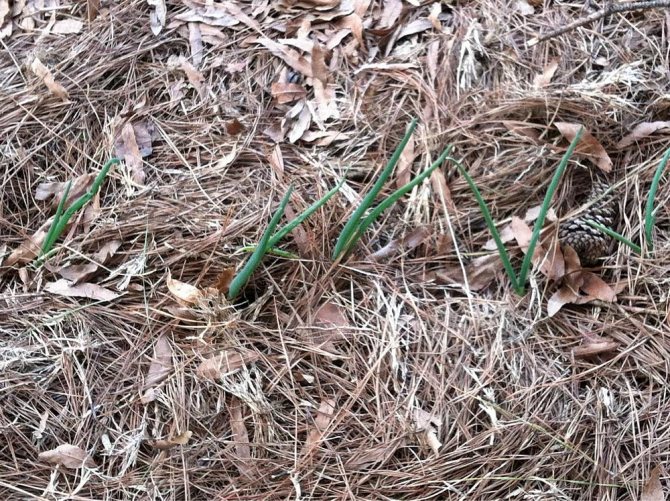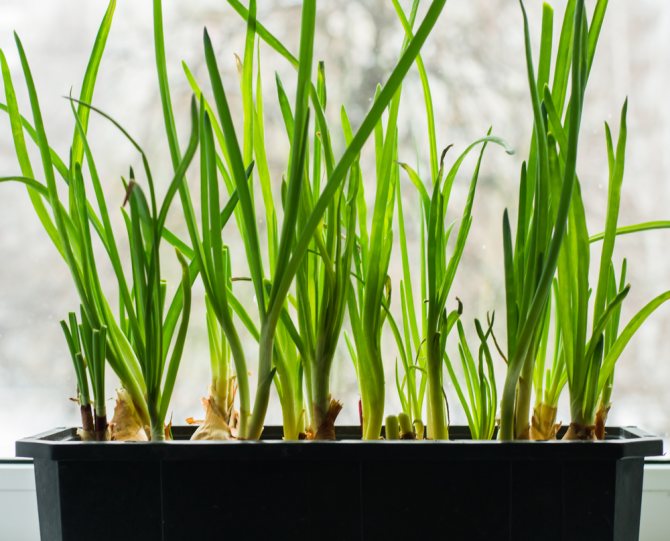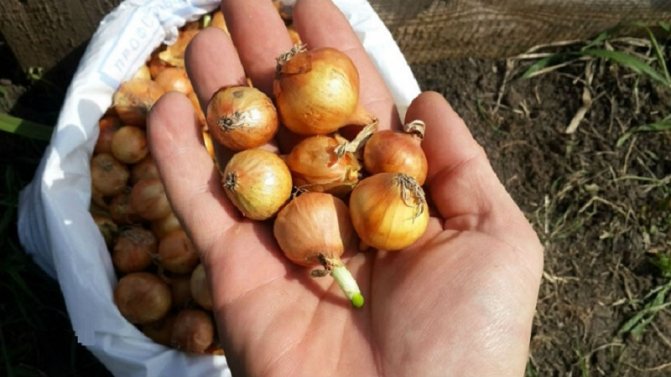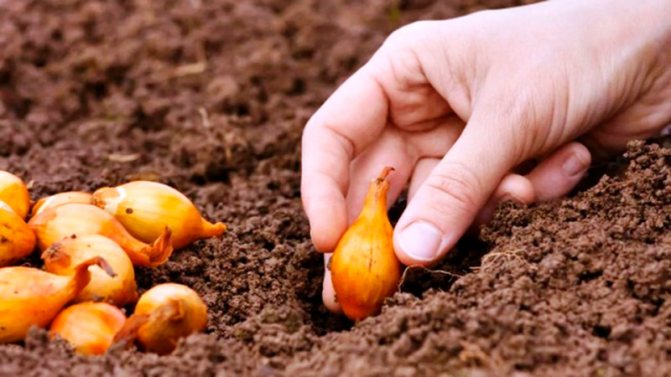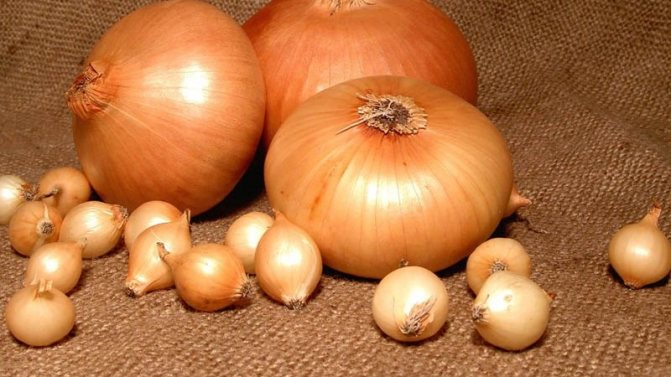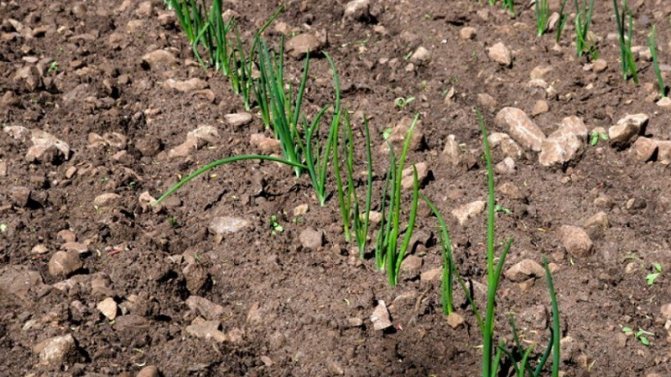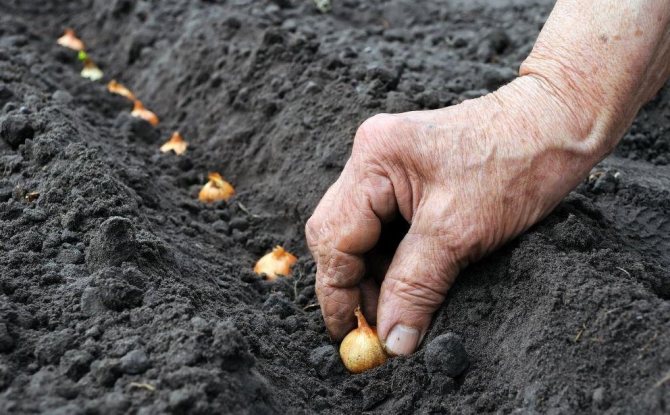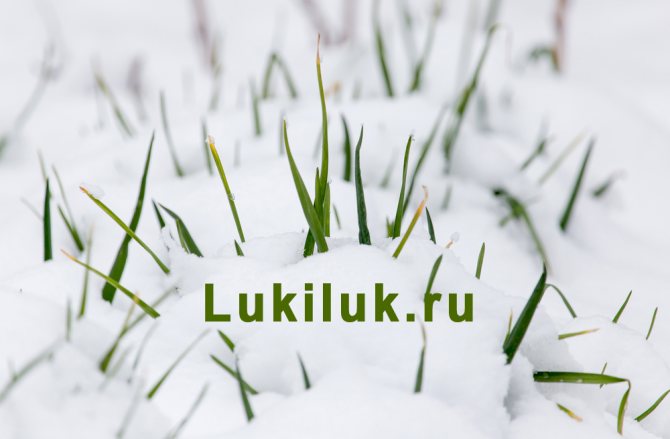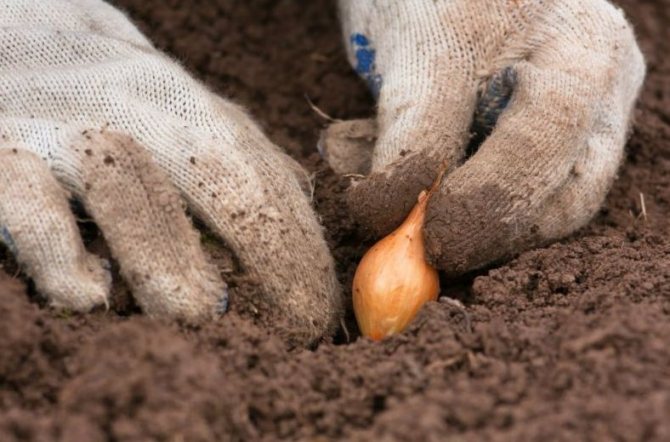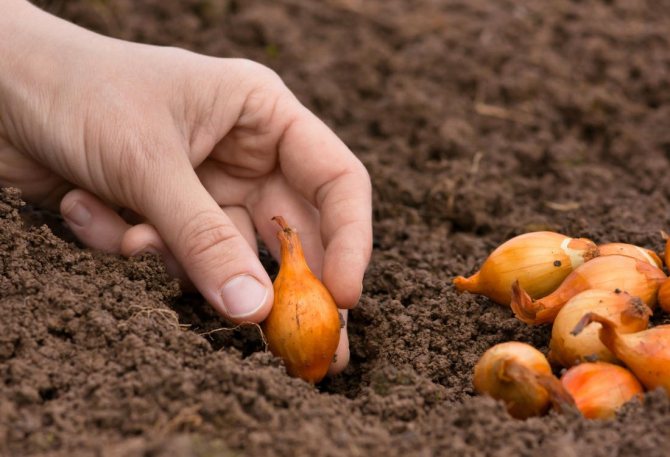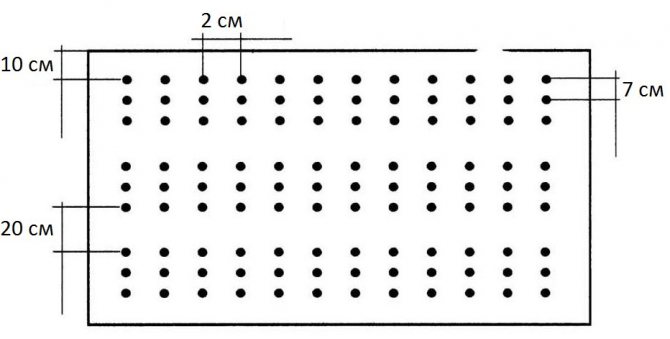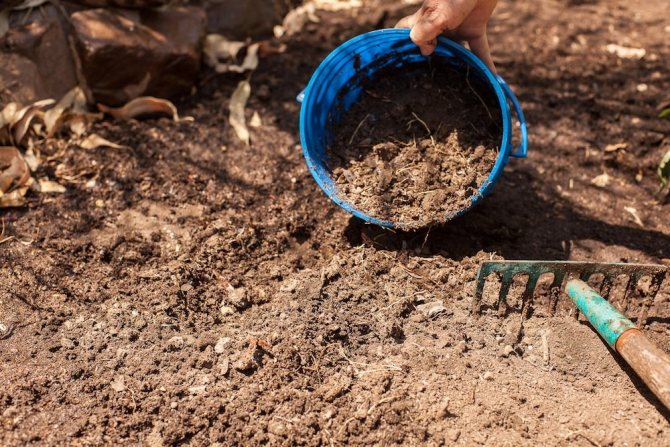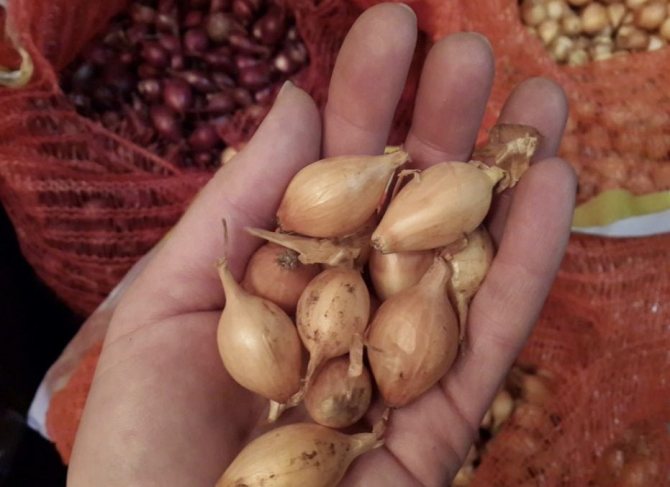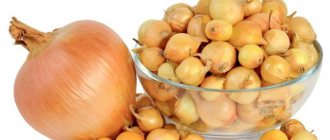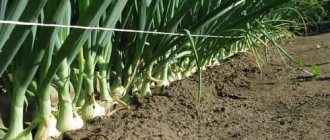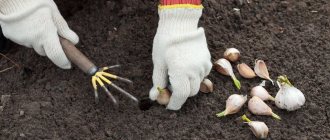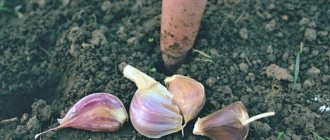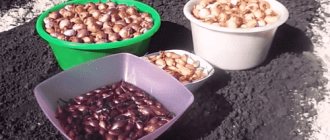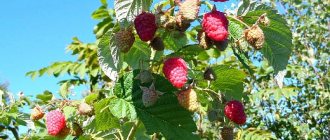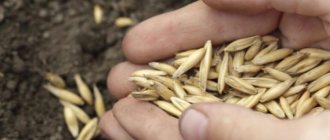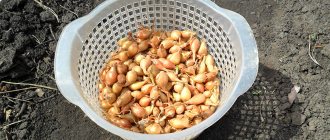In Russia, it is difficult to find a vegetable growing farm or a personal plot where onions are not grown. This biennial plant is widely used for the preparation of first and second courses, and the green onion feather in early spring is the supplier of the first vitamins. It is common knowledge that onions are traditionally planted in the spring, but the bulbs can be placed in the garden in the fall. Both terms have strengths and weaknesses. How to properly carry out the autumn planting of onions before winter on a turnip is described in this article.
Advantages and disadvantages of autumn planting
Usually onions are planted after spring snowmelt. Onions are included in the list of cold-resistant crops, and therefore, it becomes possible to plant them in early spring, as soon as a positive temperature is established.
Experienced growers often start planting in the fall. This technology has many advantages, but there are also weaknesses.
Pros:
- In the autumn, the gardener is not very busy. Having planted the bulbs in the fall, the spring front of work is reduced.
- In the spring of next year, winter onions will outstrip spring onions by 20 days or more. At the zenith of July, the culture completely frees up its area. At this place, you can grow another crop with a short growing season until the end of the season.
- If you use the smallest planting fraction - wild oat - for autumn planting, you can not be afraid of spring onion shooting. The use of large fractions for autumn planting can lead to premature arrow formation.
- Crop pests are not as active in autumn as in summer. In the short remaining warm period, onion flies and other pests will not cause significant damage.
- Insidious diseases - gray rot, powdery mildew in autumn are not as dangerous as in summer.
- Planting autumn onions at the onset of spring rapidly grows a green feather, captures space and suppresses weeds.
- Winter onions give a better and higher yield.
- Onions planted in autumn get a lot of moisture from the snow that melted in spring. It needs to be watered less.
- The bulbs of the crop obtained from the winter sowing are rather well stored in the winter, but the spring onions are preserved better.
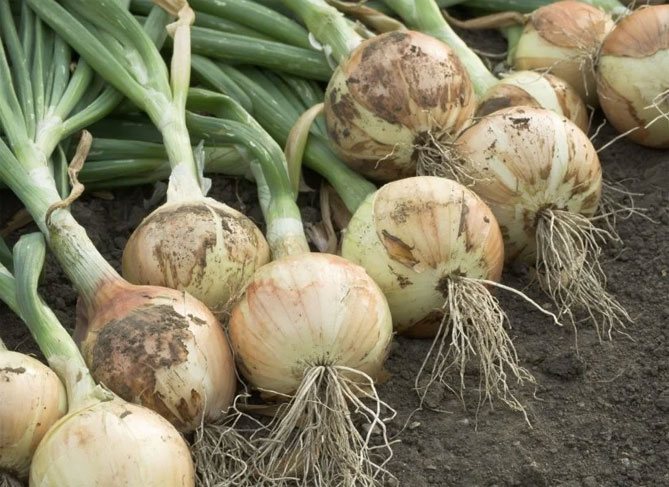
Minuses:
- it is difficult to guess the best landing date;
- there is a need to shelter the beds for the cold period from freezing;
- you need to increase the landing rate by 15%;
- winter onions are preserved worse than spring onions.
Gardener Secrets
Every vegetable grower has his own opinion on the cultivation of a particular crop. You can transplant the onion at home, or you can leave it in the garden as it is. It is generally accepted that if winter varieties were used for planting and onions sprouted before frost, then the harvest will be in any case, albeit a little worse. If the usual variety was planted, then in the summer it will still go to the arrow. According to gardeners, such onions are best used for greens.


The future harvest of the crop in question largely depends on the correct timing according to the growing region. So, if in Belarus onions are planted from the beginning of October to the beginning of November, then in the Urals the dates will be completely different - from the end of September to the beginning of October.
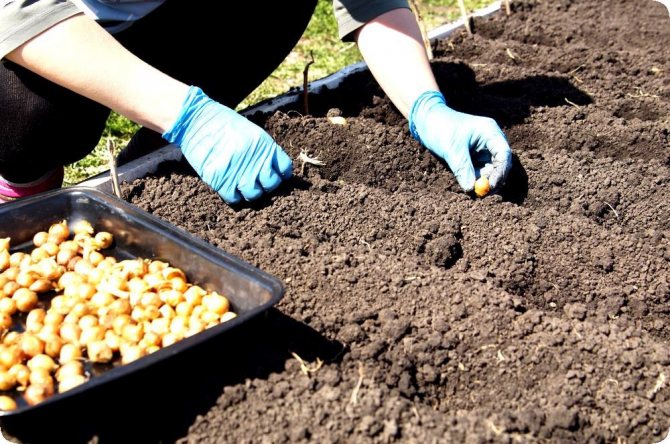

Since the climate changes every year, you need to plant onions taking into account the weather conditions, paying attention to the forecasts.
Even if the onion began to sprout and leave it like that in the winter, then next year it will be possible to get a harvest from it. Despite the fact that he will go to the arrows, according to the advice of some vegetable growers, it will be possible to simply cut off the buds, and not touch the arrow itself, because it works like a leaf, albeit bloated. The bulb will gain weight and turn out to be slightly curved towards the arrow. However, this does not at all prevent the use of such a bow for various blanks.
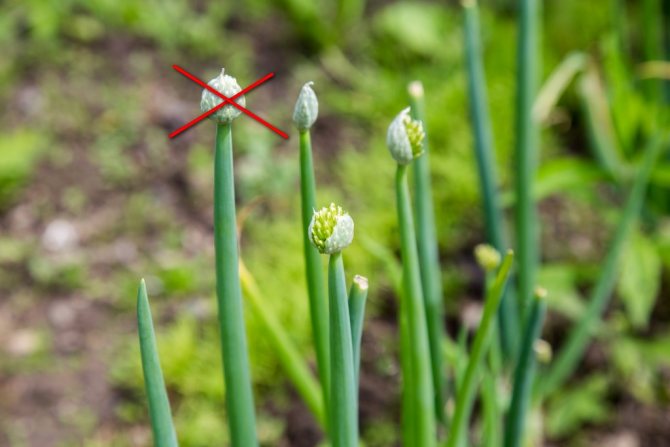

Onions are an unpretentious crop, although their cultivation has some peculiarities. Even in the event that the onion planted before the winter has risen in the garden, the answers described in the article with the photo, what to do next, as well as the rules and recommendations will help you get out of this situation and make the right decision. In any case, you should not be upset, because even if a vegetable sprouts ahead of time, it can be used as fresh herbs to the table.
Winter onion varieties
Not the entire varietal list is suitable for planting before winter. For planting, the most frost-resistant varieties are selected that can endure the cold winter without consequences, and with the onset of warming, quickly grow leaves.
The list of frost-resistant varieties includes:
- Stuttgarter Riesen;
- Ruby;
- Arzamas;
- Buran;
- Bessonovsky;
- Lugansk;
- Strigunovsky;
- Chalcedony;
- Danilovsky;
- Siberian.
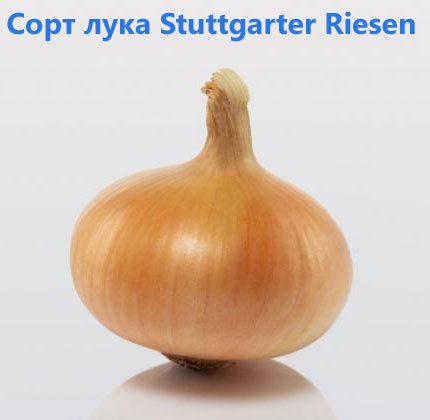

Important! Winter onion varieties used for planting in the northern regions must not be planted in the south. And varieties cultivated in the south are not planted where severe winters are observed.
Before winter, it is allowed to use different types of material for landing. Planting sevka for the winter on a turnip is cultivated. Chernushka is also sown in autumn. It is allowed to be sown later than sowing, at the end of November, in the already frozen soil layer. For convenience of sowing, under such conditions, the sowing furrows must be made in advance.
Is it possible to plant sprouted onions before winter
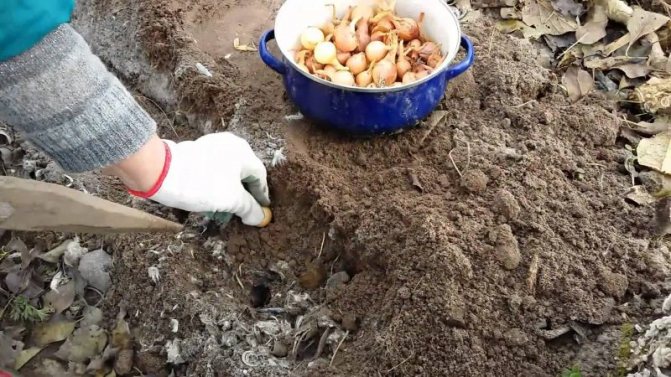

It all depends on how much the onion has sprouted. The options are:
- If the bulb has sprouted a little, it can be planted before winter with everyone else. Just before that, you need to look at the weather forecast - whether frost is expected the next day. Otherwise, the sprouts may die.
- If the sprouts are medium in size, cut them off and then plant the onions. But such a bow will not give a turnip.
- If the bulb has sprouted strongly, it remains only to throw it away, because there will be no harvest from it.
It is recommended to plant cut-off shoots in a separate part of the garden bed. So after the shoots appear, it will be easier to understand where the onion is on the greens (for quick use).
Reference. In order not to throw out the sprouted sevok, you can plant it in a jar at home. Then there will always be fresh herbs to the table.
Landing dates
Planting seedlings in the fall must be carried out under certain conditions, before frost. In many regions of the country, planting is performed in October. The term must be chosen such that before frost the onion grows roots, but does not have time to form feathers.
How can you more accurately set the landing date?
To accurately determine the landing moment, temperature indicators should be continuously monitored. When the air temperature is +5 degrees for about a week in a row and, according to forecasters, a greater cooling is expected - this is just the moment when you should land.
It is worth planting only zoned varieties, with a dormant period from December 16 to January 15. The sevok used for planting should have a diameter of about 1 cm.
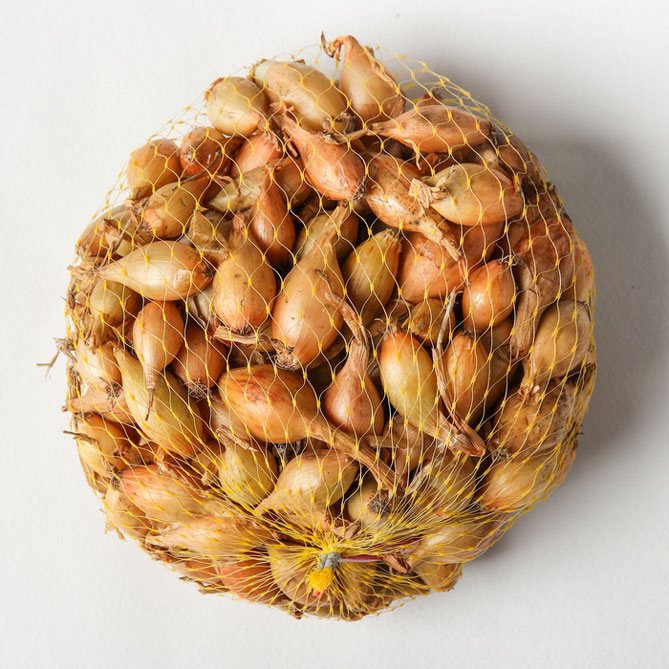

Do not plant your bulbs too early or too late. The planted bulbs must have time to release the roots, not have time to resume the growth of leaves. Otherwise, the plantings will freeze out during the cold season.It was found that from the day of planting to the appearance of the roots of the bulb, a little more than 2 weeks pass.
The main indicators for identifying the date of planting in any locality are the climatic features of the region and the weather prevailing in the fall:
- in regions where there is a mild winter, the planting procedure is performed at the end of October or at the start of November;
- in other regions, you should wait until the temperature drops to +5 degrees.
Important! Do not worry too much if the onion has time to grow a feather up to 1.5 cm long in the fall.However, if the feather grows 5 cm or more, such an onion is unlikely to survive the winter.
Landing dates in different regions
Weather characteristics are not the same in the regions. Therefore, the timing of disembarkation varies greatly.
- Ural... Onions before winter in the Urals are planted at the end of September or at the start of the next month. Winters are harsh there, so the most frost-resistant varieties are planted. Delays in disembarkation are fraught with unpleasant consequences, even in the south of the region it sometimes snows in October.
- Siberia... Because of the severe frosts, planting onions before winter in Siberia is risky. But even in this area, having correctly guessed the landing date, planting frost-resistant varieties and making a warm shelter for the beds, you can get a decent result. The procedure should be completed before the end of September.
- Moscow suburbs... Planting onions before winter in the Moscow region is planned from 5 to 25 October. In this climatic zone, winters are snowy enough, onions do not freeze.
- South of Russia, Ukraine... For these areas, it is customary to plant onions from October 20 to mid-November.
- Leningrad region, Belarus... In these areas, winters are not accompanied by severe frosts. Onions are planted from the start of October to the end of the first decade of the next month. About a month remains before the frosty period.
Important! When planting in autumn, it is important that the bulbs do not end up in warm ground. The soil layer must be cooled down.
Spring onion care
As soon as the snow has melted, the mulch is immediately removed, otherwise the sevok may rot. The winter road rises very early, like garlic. As soon as the sun warms up, shoots appear. The culture is not afraid of frosts down to -4-5 ° C, but if the nights are cold, the plants are covered with lutarsil or film. In the morning, the covering material is removed.
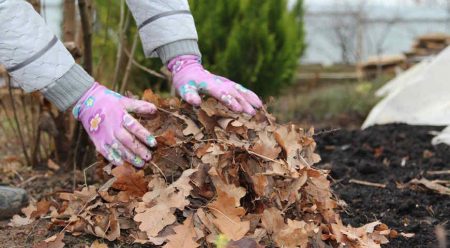

When plants are damaged by night frost, the tips of the leaves turn white, and the stem and leaves themselves acquire a whitish-yellow tint. In this case, they urgently give top dressing with potassium or calcium nitrate (fertilizers containing nitrogen), they help the onion to survive a stressful situation and contribute to the regrowth of new leaves. Urea cannot be fed at subzero night temperatures, since it contains pure nitrogen, and it, without the presence of other elements, reduces the frost resistance of plants.
Top dressing onions
In the first half of the growing season, winter onions need nitrogen, therefore, when the threat of frost has passed, top dressing is done with infusion of weeds, humates, or urea. After the formation of 5-6 leaves, potassium-phosphorus fertilization is given (1 tablespoon of each fertilizer per 10 liters of water), or the onions are fed with ash infusion. But if the soil is fertile, feeding is not carried out.
You cannot feed the winter road with manure. The nitrogen contained in the manure is needed by the onion only during the period of feather growth, then it will prevent the formation of bulbs. But since manure decomposes slowly, the maximum amount of nitrogen enters the soil when the plant sets the bulb. As a result, the onion either continues to grow its feathers, or, in rainy weather, it rots.
Watering
The winter road is undemanding to watering. After winter, there is a sufficient amount of moisture in the soil, therefore, watering is not carried out in the first 20-30 days after germination. Then, in hot and dry weather, water the plants 1-2 times a week, depending on the air temperature. All watering (and liquid dressing) is carried out strictly at the root.The soil between the rows must be loosened. Onions are very sensitive to a lack of oxygen in the root zone, and if a crust forms on the soil, the bulb suffocates and rots.
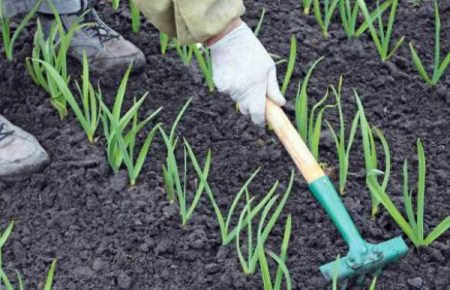

If the onion is grown for a turnip, it is undesirable to cut off its feather. When the leaves are removed, the plants grow new ones to the detriment of the bulb. When the leaves are removed too much, the turnip turns out to be very small, or it may not tie at all.
After 35-50 days, depending on the variety, watering is stopped, and in wet weather, the soil is raked off the turnip so that the bulb can breathe. From this time on, the ripening of the bulb begins and excess moisture harms the plants.
When the feather is lodged, the onion is ready for harvesting. The winter road ripens, depending on the region, in early-mid July.
Site selection, predecessors
Onions love sunny, dry areas. Garden beds where water stagnates are completely unacceptable. If the entire summer cottage is in a lowered place, you need to form high beds by adding additional soil.
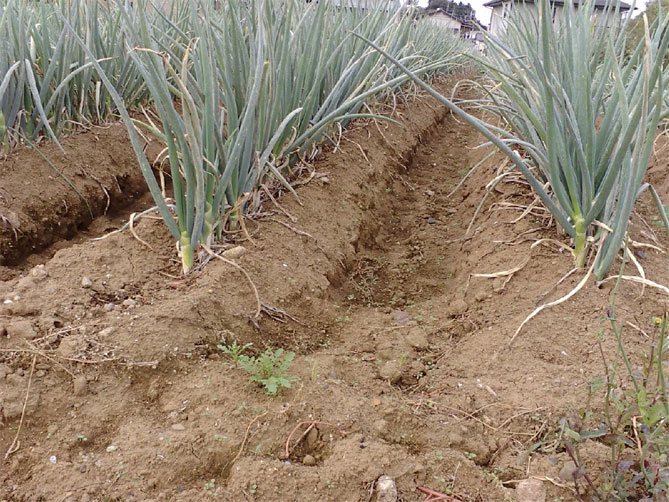

It is better to place the bed on the southern slope of the site. So the plants will be protected from the piercing wind. Drained humus-loamy soils are optimal for onion plantings.
To obtain a good harvest, it is important to observe the crop rotation.
Table. Precursors for onions
| Good | Bad |
|
|
Important! The bow is allowed to be returned to its original place not earlier than after 4 years.
Soil preparation
It is advisable to prepare a bed for onions 2-3 weeks before planting:
- First, humus is applied to the site at the rate of 5.5 kg per m².
- Then evenly scattered on each square meter 14 g of potassium sulfate and 23 g of superphosphate.
- Ash can be added at the rate of 10 g per 1 m².
After distributing fertilizers, you need to dig up the area. Novice vegetable growers are interested in how deep the earth should be dug? Deep digging of the onion is not needed, it is enough to deepen the shovel by 20 cm.
Important! It is advisable to slightly raise the winter ridges of onions in order to protect the crop from spring flooding.
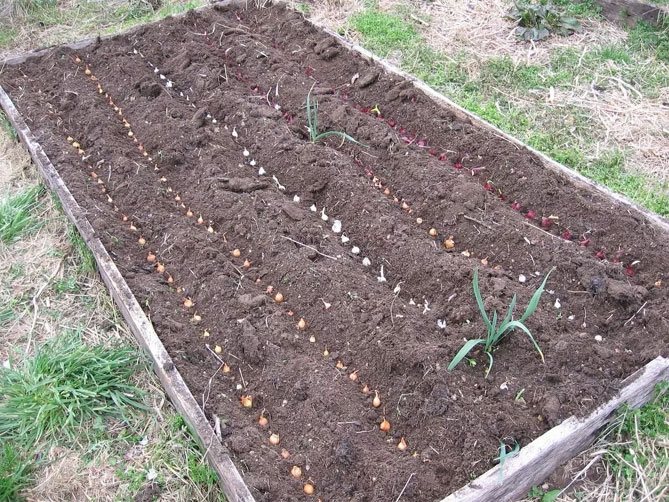

What if sprouted?
Onions begin to sprout at freezing temperatures. If this happened early and there will still be periods of warm weather, then it is best to dig up the planted and sow again. If the ground is frozen, then you cannot do this.
Important! Sprouted onions must be covered either with a layer of unfrozen soil (layer thickness - 2-3 cm), or using mulching materials (compost, foliage, cut grass, etc.), which are also covered with a garden bed.
For more information on what to do if the winter onion sprouts in the fall, see here.
Growing winter onions is a simple process and has a number of important advantages. There is a huge variety of varieties suitable for this. If you choose the right variety and follow the rules for growing winter onions, the result will not disappoint you.
Preparing the bulbs for planting
Before planting, the bulbs are calibrated with the simultaneous rejection of specimens unsuitable for planting:
- dried up;
- with signs of illness;
- injured;
- rotten.
When calibrating, the planting bulbs are divided into fractions:
| Fraction | Bulb diameter (diameter), cm | Appointment |
| Oat | 1 | land on a turnip |
| Sevok | 1-2 | on a turnip or feather |
| Sampling | 2-3,5 | to get a green feather |
It is interesting! The larger the planting fraction, the faster the feather grows in spring. The feather grows longer in wild oat than in other fractions, the number of leaves is less.
Harvesting and storage features
Collect winter onions when the husk acquires density and colorcharacteristic for a particular variety. Lodging of leaves is also a striking sign.
The onions are carefully dug in with a pitchfork, and they are simply pulled out of the loose soil by the leaves. After that, he is allowed to lie down for 1-2 days so that the earth dries up and crumbles, and then the leaves and roots are carefully trimmed with scissors or pruning shears.If you plan to keep the onions tied in braids, trimming the leaves is not necessary. The roots are always removed. It is important not to damage the bulb.
After trimming, the onions are dried for 3-5 days. in the sun or, if the weather is rainy, under a canopy. Then it is stored in a cool dry place.
Landing technology
If the soil and planting bulbs are prepared, you can proceed directly to the planting procedure. It is performed according to the following algorithm:
- planting grooves are made on the garden bed;
- the distance between the rows is taken to be about 20 cm;
- for small onions, the depth of the furrows is made 5 cm, for large-sized fractions - 8 cm;
- place the bulbs in the grooves so that the landing step is 7 cm;
- a seven-centimeter layer of prepared soil mixture is poured on top of the bulbs;
- the bed is leveled, compacted a little.
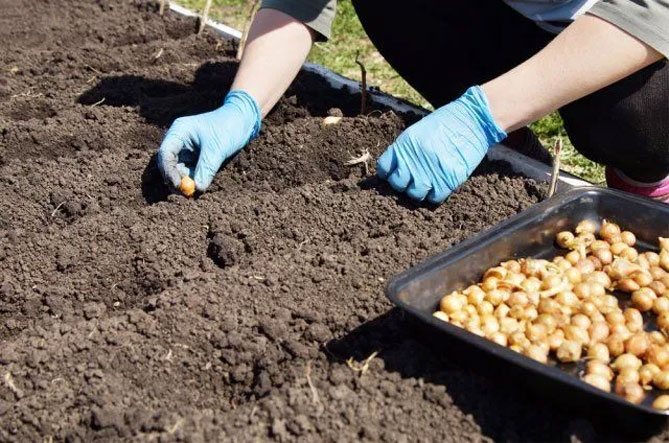

Important! The larger the planted bulbs, the greater the spacing in the row between them and the planting depth.
conclusions
As a result, it can be noted that planting onions in the ground for the winter (doing / making sowing, planting / planting winter onions in the garden) is characterized by a certain specificity of the choice of planting material, conditions, depth, soil, processing before planting in the fall. early winter harvest of family onions, both for own use and suitable for sale. This planting method has many advantages that lead to its application in practice. Also uses soil planting of onions in greenhouses.
Care after landing
A little more than a month remains from the moment of planting to the cold weather, so the onion care is as follows:
- If the weather is dry and warm after planting, 1-2 watering can be done before the cold weather.
- A couple of weeks before frost, the beds are mulched with straw, dry foliage or peat. In the south, where winters are mild and not accompanied by severe frosts, it is not necessary to mulch onion beds.
Novice gardeners in the fall often think about whether it is necessary to cover additional beds for the winter from freezing of the bulbs. There really is a need for this in those areas where frosty, snowless winters are observed. Usually, the beds are covered with tops of vegetable plants.
At the beginning of winter, while there is little snow, it is recommended to collect it and shovel it over the garden bed. Snow is an excellent insulation for the soil, it will protect against any frost.
If you choose the right time for planting a winter crop and do everything in accordance with the recommendations outlined in this article, onion plantings will winter well and give a good harvest.
When is the best time to plant onions - in autumn or spring, and why


It is well known that onions can be planted in early spring after the snow has melted and temperatures are positive. Onions are a cold-resistant crop, therefore, relatively early dates are chosen for planting.
However, there is a technology in which onions are planted before winter, and it has many adherents. So why do they insist on planting onions late in the fall? It turns out that subwinter planting has many advantages that are worth mentioning.

